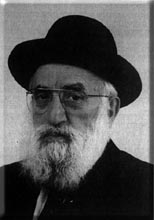Beit Midrash
- Sections
- Chemdat Yamim
- Parashat Hashavua
- Torah Portion and Tanach
- Shmot
- Terumah
After Bnei Yisrael entered Eretz Yisrael, the Mishkan was situated in Shilo for hundreds of years, and this was the place where people came to bring sacrifices and come thrice yearly for their religious duties. However, there is no hint that Shilo had any role in other elements of running the country, governmentally or judicially. This is in contrast to the situation in the desert, where Moshe’s leadership emanated from the Mishkan. It was there that Moshe continued to receive the teachings that made up the Torah, until it was sealed in the 40th year in the desert, upon Moshe’s death.
We will try to see what happened in this regard in the Beit Hamikdash (Holy Temple) in Yerushalayim, built by Shlomo. Let us look at the dates cited for the completion of the Beit Hamikdash. In Melachim I:6 it is cited that the building was complete in the eighth month (what we call Cheshvan) of the 11th year of Shlomo’s reign. In Melachim I:8, it talks about Shlomo gathering the people to inaugurate the Temple in the Festival (Sukkot) in the month of Eitanim (Tishrei). A third pasuk (Melachim I:9) talks about 20 years for the building of two houses: the House of Hashem and the House of the King.
If the Beit Hamikdash was completed in Cheshvan, why was the inauguration held in Tishrei? It is likely that Shlomo felt it was appropriate to celebrate specifically in the festive month of Tishrei. It could be that Shlomo moved up the inauguration a month before the final completion of the building. Alternatively, he could have waited eleven months until the next Tishrei.
It is also possible that the Beit Hamikdash complex was built in two stages. The actual Temple, where direct service of Hashem was held, was completed in seven years, and that is what was completed in Cheshvan. However, the entire seat of the kingdom that was built around the Beit Hamikdash went on for an additional thirteen years. This extended area included the chambers of the Sanhedrin (judiciary) and the king’s palace. According to this possibility, until all the elements of a sovereign functioning monarchy were in place, the ark was not brought into the Holy of Holies. That is the event that occurred in the month of Tishrei. At that point, the Divine Presence descended and occupied the Beit Hamikdash. The spiritual lesson of such an approach is far-reaching. Without all of the elements of a stable, successful society, the nation could not reach the highest spiritual levels.
Our prayer is that the governmental institutions, prominent among them, the Knesset (whose building is called Mishkan Haknesset), will fulfill their roles properly as those that help the Divine Presence dwell among us. Then Givat Ram (The Hill of the Lofty, where the Knesset is situated) will be an expression of the Divine, about Whom the pasuk says: "Ram v’nisa" (lofty and elevated) (Yeshaya 57:16).

Parashat Hashavua: Can One Give a Loan to Hashem? – part I
Rabbi Yossef Carmel | Elul 5785

Parashat Hashavua: What’s in the Name of Noach?
Rabbi Yossef Carmel | Cheshvan 5786

Parashat Hashavua: Nitzavim in the Parasha and by Yam Suf
Rabbi Yossef Carmel | Elul 5785




















